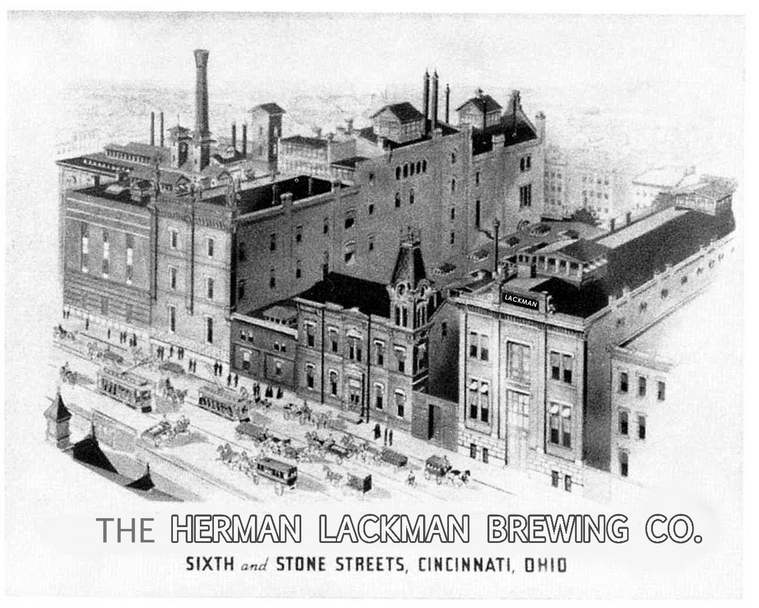The story of the Lackman Brewing Company starts with Herman Lackman… who for a lack of a better way to put it, was busting his butt to make his fortune after moving to the United States in 1847. He held a few different jobs, before ending up driving a beer wagon. This entry into the beer business certainly changed things, and eventually he found himself investing back in the industry.
Lackmann partnered up with J.H. Sandmann in 1855 to lease out the City Brewery and they operate there, building the business until they needed to expand.
In 1860, expand they did! The duo moved their operation to a new location at Sixth and Stone Streets. This new location had space for more than 500bbls in their beer cellar, increasing their output from somewhere around 2,000 barrels of beer in 1855 all the way up to 6,000bbls of beer in 1865.
In 1868, Lackman bought out his partner and renamed his company ‘The Herman Lackman, United States Brewery’, which continued to operate, and in fact, grow quite a bit until it was forced to close with Prohibition in 1919.
Post prohibition, the company reorganized and started plans to reopen, securing an option on four acres of land in the Riverside area of the city. These plans called for a new 50,000bbl a year facility, with the ability to quickly grow as needed. Unfortunately, upon not being able to secure a brewing permit with repeal, the plans faded.
In 1933, the Hudepohl Brewing Company purchased the old brewery and put it into operation as Plant number 2. The signature smokestack stood overlooking the city until it was finally demolished in 2019.

The Lackman Brewery Timeline
- 1855 – Herman Lackman and J.H. Sandmann operate a brewery out of the former City Brewery.
- 1860 – The brewery opens in its new location at Sixth and Stone Streets.
- 1868 – Herman Lackman buys out Sandmann, who retires – he renames the brewery The Herman Lackman, United States Brewery.
- 1890 – The business is incorporated, and dubbed ‘The Herman Lackman Brewing Company’.
- 1919 – The brewery is forced to cease operations as prohibition goes into effect.
- 1932 – The company reorganizes post-prohibition, and starts plans to reopen the brewery.
- 1933 – The historic building was purchased and put back into operation as Hudepohl Brewing Company‘s ‘Plant #2’
- 2019 – The building, including its historic smokestack was demolished.
